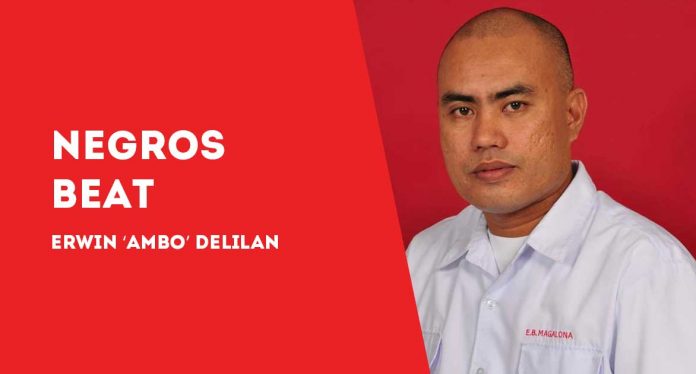
By ERWIN ‘AMBO’ DELILAN
HAVE YOU heard the word “criollo”?
Sounds foreign, thus weird, to Negrenses’ ears.
“Criollo” connotes history and heritage for Bago City, or Negros Occidental, or the Philippines in general. It is a foreign-turned-native breed of cacao.
Per history, such a breed of cacao was brought to the country during the galleon trade or during the landing of Ferdinand Magellan in the Philippines in 1521. Criollo is thus not just an ordinary cacao but a heirloom.
Now, to salvage this breed of cacao, the city government of Bago has launched a noblest endeavor – massive planting of Criollo in all their villages.
I talked to both Mayor Nicholas Yulo and City Tourism Office Ann Furtos on why this breed of cacao instantly became the “talk of the town”.
Candidly, Mayor Yulo said this was because Bago’s “sikwate” (hot chocolate drink) out of criollo cacao beans with pilipig (rice crisps) became a hit during the five-day Terra Madre Saline del Gusto, a slow food exhibition at Parco Dora in Turin City, Italy on the last week of September.
Terra Madre, hence, served as a takeoff point for the city government of Bago to more than appreciate the significance and benefits of criollo cacao in their city’s history, heritage and livelihood.
Mayor Yulo was surprised by the positive reactions and comments on their “sikwate with pilipig” by many Italian people and other international guests that flooded the Terra Madre.
With this, Mayor Yulo said it is but natural for them to launch a drive for a massive propagation of criollo cacao within their city starting the first day of October.
“We asked all our 24 barangays to endeavor planting criollo cacao, and the city government will support them in any way we can,” he said.
JUST GROWING ANYWHERE
For as long as they can remember, criollo, for the Bagonhons, is just a native variety of cacao growing just anywhere in Bago.
Then, there is this farmer, Christopher Fadriga, who took time gathering some of the wild criollo cacao seedlings sprouting by the roadside. He had them planted in his three-hectare farm in Barangay Atipulu-an.
After many years of cultivating such, Fadriga’s criollo cacao variety took the spotlight in the International Cocoa Awards in London, Paris, France in 2021.
It won gold.
Then, after three years, again, Bago’s criollo chocolate products were included in the “Ark of Taste”, a recognition that further boosted Fadriga’s well-meaning mission of propagating cacao in Bago.
“Ark of Taste” is a collection of small-scale quality productions that belong mostly to cultures, history and traditions of the world.
But it is more than an extraordinary heritage of fruits, vegetables, animal breeds, cheeses, breads, sweets and/or cured meats.
FINEST, RAREST
Lately, Mayor Yulo said many have attested, including foreign chefs and slow food aficionados, that criollo’s by-products like the tablea (chocolate bar) and sikwate have really distinct tastes.
That inspired him more to really push for the widespread propagation of criollo cacao in their city.
Explained by the mayor, having a massive campaign for criollo cacao planting, they are hitting many birds with just one stone:
* sustaining livelihood for current and future cacao farmers in their city
* significantly contributing to regreening the Earth and, at the same time
* reliving the history during Magellan’s era, or galleon trading
More so, Furtos said that, based on their research, criollo cacao beans belonged to only 1% out of the 5% finest and rarest cacao bean varieties in the world.
“That’s why Bago is blessed to have Sir Chris Fadriga and his criollo cacao plantation now because we can tell the world that we are propagating a heirloom cacao,” Furtos said.
ONCE AGAIN, WITH FEELING
Well, to be honest, I am neither a cacao lover nor a chocolate craver. Thus, for me, cacao and chocolate are nothing, or nonsense.
But why did I take interest in crafting an article on this matter?
That’s because I was really impressed by the reasons and purposes behind the move of Bago City for a massive cacao propagation.
The components of history, heritage, environmental protection plus livelihood with this criollo cacao are complex yet these have caught everyone’s interest. Call it a unique brew for history’s and heritage’s sake.
I praise Mayor Yulo, Ann Furtos and Christopher Fadriga for propagating “once again, with feeling” this criollo cacao.
According to Elizabeth Aston, an English author on mystery, history and contemporary fiction, “An heirloom is an ornament of quite a different kind.”/PN







